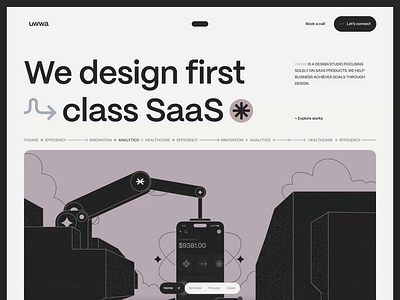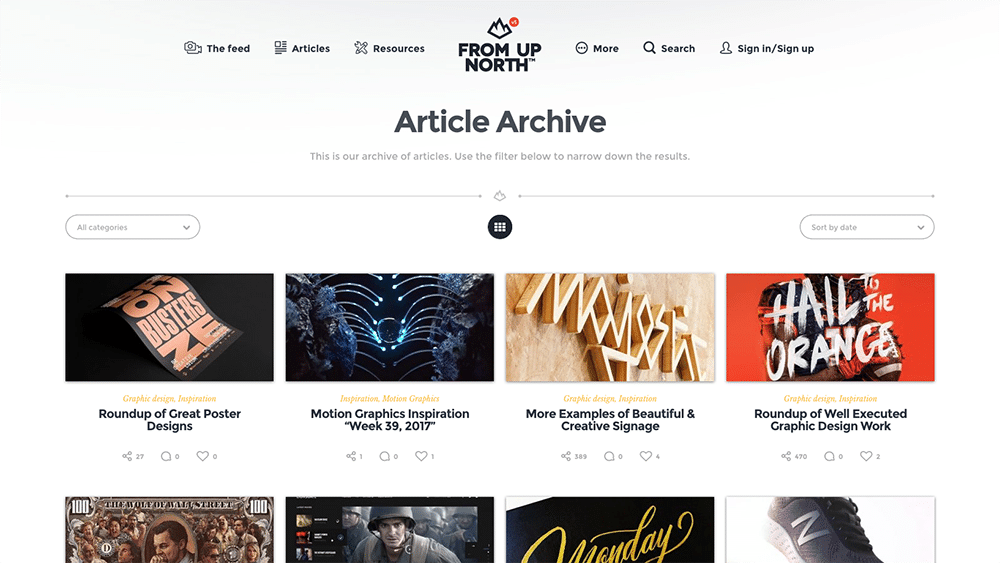How Professional Website Design Helps Build Trust with Your Audience
How Professional Website Design Helps Build Trust with Your Audience
Blog Article
Modern Site Design That Records Focus and Converts
In a significantly digital landscape, contemporary internet site style has emerged as a critical aspect in recording user attention and driving conversions. As we discover these vital elements, it ends up being clear that recognizing their interaction can significantly affect a web site's performance and user fulfillment.
Relevance of Visual Hierarchy
Aesthetic pecking order is an essential aspect in internet site design, as it guides individuals' interest and improves their total experience. By strategically arranging material, designers can guide customers to the most essential information first, thus enhancing engagement and enhancing usability.
Incorporating a logical flow in material setup is necessary; as an example, positioning one of the most crucial info on top of a page promotes prompt acknowledgment. In addition, regular use typography, such as differing font dimensions and designs, assists establish a clear content framework. This organization not only aids in navigation but likewise builds count on, as individuals really feel more comfy when they can easily find what they are seeking.
Ultimately, a well-executed visual hierarchy not only improves visual allure yet additionally substantially affects customer behavior. By prioritizing essential components and ensuring a smooth experience, designers can properly convert site visitors right into customers, enhancing the relevance of this foundational design concept in contemporary website growth.
Responsive Design for All Instruments
Producing a seamless experience across various tools is vital in today's electronic landscape, where users accessibility web sites from tablets, mobile phones, and desktop computers alike. Receptive layout is a vital technique that makes certain internet sites adapt fluidly to various display dimensions, resolutions, and orientations. By employing versatile grids, images, and CSS media questions, designers can produce designs that maintain visual honesty and capability, no matter the device being made use of.
The importance of responsive layout extends past looks; it directly impacts customer involvement and conversion prices. A web site that functions well on all gadgets encourages longer brows through and lowers bounce prices, as users are extra most likely to interact with material that is simple to navigate. Search engines, particularly Google, prioritize mobile-friendly websites in their rankings, making responsive style a vital component of search engine optimization (SEO)
Incorporating receptive design not just enhances customer experience yet additionally simplifies the development procedure. By producing a solitary site that functions across devices, companies can conserve time and resources compared to developing different mobile and desktop computer variations. Inevitably, receptive style is an essential technique for modern-day site design, guaranteeing accessibility and complete satisfaction for all customers, despite their gadget.
Engaging Interactive Elements
While a responsive design prepares for a functional internet site, including appealing interactive components is critical for capturing user attention and cultivating deeper links. Website Design. Interactive components, such as animations, tests, and clickable infographics, produce a more vibrant individual experience, urging visitors to invest more time on the website
Including interactive functions can likewise direct customers via complex details, making it simpler to digest web content. Interactive sliders can show product variants, while embedded video clips can give demonstrations or reviews that reverberate even more than fixed photos or text. Gamification techniques, like rewards for see it here finishing jobs or engaging with material, can improve user motivation and retention.
Effective use of interactive aspects not only enriches the individual experience but can likewise lead to greater conversion prices. By making communications insightful and enjoyable, organizations can grow a sense of commitment and count on with their audience. Nevertheless, it is important to stabilize interactivity with performance; extremely complicated functions may prevent site rate, negatively impacting user satisfaction. Ultimately, incorporating properly designed interactive aspects can dramatically raise a web site's efficiency, driving interaction and conversions in today's competitive electronic landscape.
Structured Navigation Practices
Efficient navigation is a foundation of any type of effective internet site, as it directly influences individual experience and web content availability. Structured navigating methods make sure that users can quickly locate information, boosting their interaction with the site. A well-structured navigating menu need to be basic and intuitive, usually including a limited number of main categories to stay clear of overwhelming site visitors.
To attain streamlined navigating, designers must prioritize a hierarchical framework that realistically organizes web content. Carrying out breadcrumb routes can supply individuals with context about their current area within the site, allowing for smooth backtracking. In addition, utilizing drop-down food selections can effectively save room while still providing accessibility to subcategories.
Receptive layout is crucial, as navigation should be practical throughout all devices (Website Design). Mobile customers, particularly, take advantage of touch-friendly menus and collapsible areas that maintain functionality without compromising aesthetics

Efficient Call-to-Action Strategies
A well-crafted call-to-action (CTA) is important for guiding users towards desired end results on a website, as it urges them to involve with web content or purchase. To maximize their effectiveness, CTAs must be clear, engaging, and tactically positioned throughout the site.
First, use action-oriented language that connects urgency or value, such as "Begin," "Sign up with Now," or "Case Your Discount." This language not just motivates users yet additionally sets clear assumptions concerning the following actions.
Second, take into consideration layout elements; CTAs ought to stand out visually via contrasting colors, enough whitespace, and noticeable positioning. A switch that is simple to see and click increases the chance of individual communication.
Furthermore, customizing CTAs based upon individual actions or demographics can substantially improve involvement. Customized messages resonate a lot more with users, driving higher conversion prices.

Conclusion
These parts jointly enhance customer experience, ensuring that site visitors stay involved and inspired to explore material additionally. By focusing on these layout concepts, organizations can considerably boost customer retention and conversion prices, inevitably leading to higher success in the digital landscape.
In an increasingly electronic landscape, modern-day internet site style has arised as a critical element in recording user attention and driving conversions.Aesthetic power structure is an important element in web site style, as it guides customers' attention and boosts their general experience.The importance of receptive style extends past appearances; it directly impacts customer involvement and conversion rates.Incorporating receptive style not only improves individual experience but likewise improves the growth browse this site procedure. Ultimately, responsive style is a fundamental method for contemporary website style, making certain ease of access and contentment for all individuals, no matter of their gadget.
Report this page